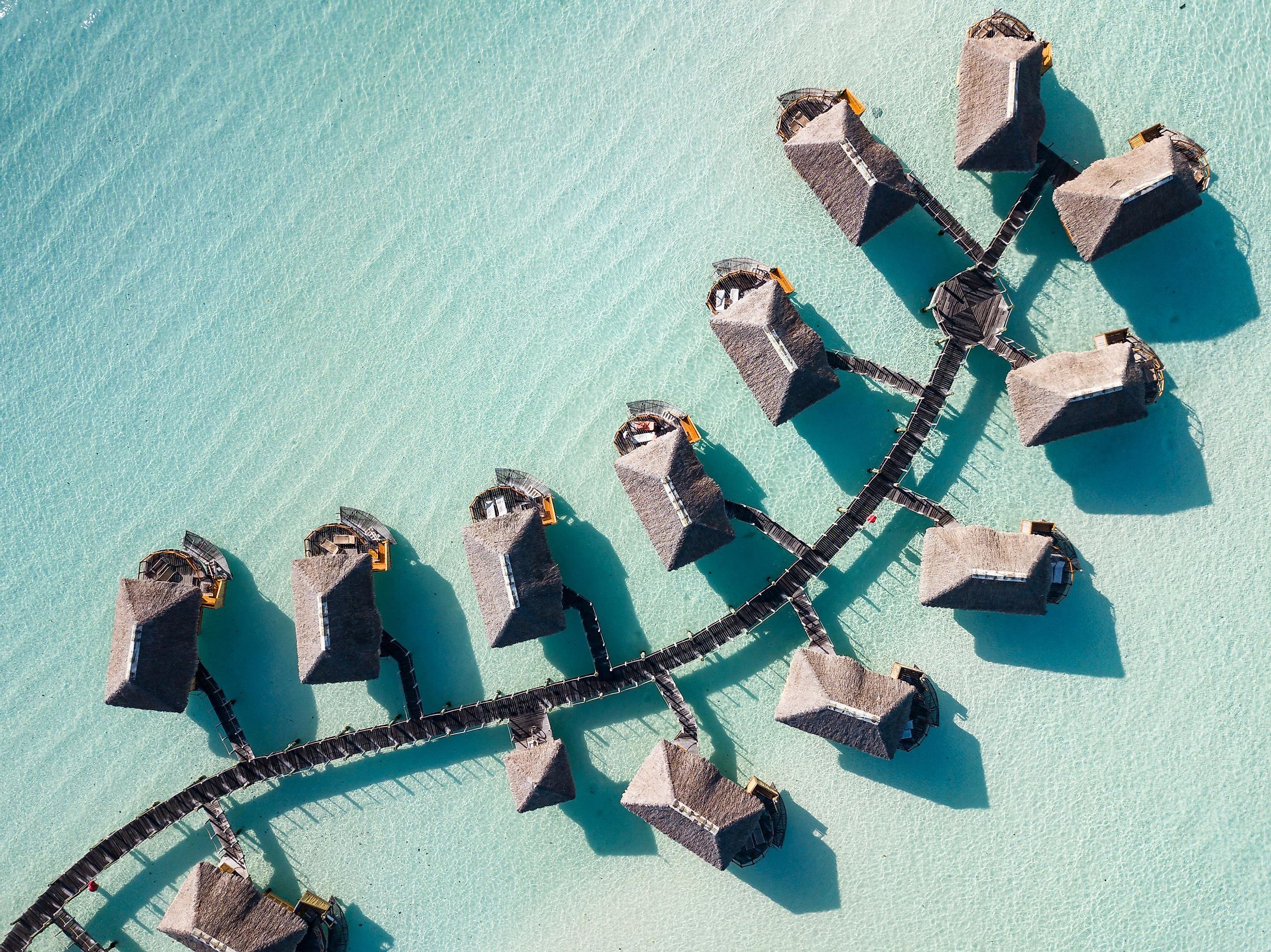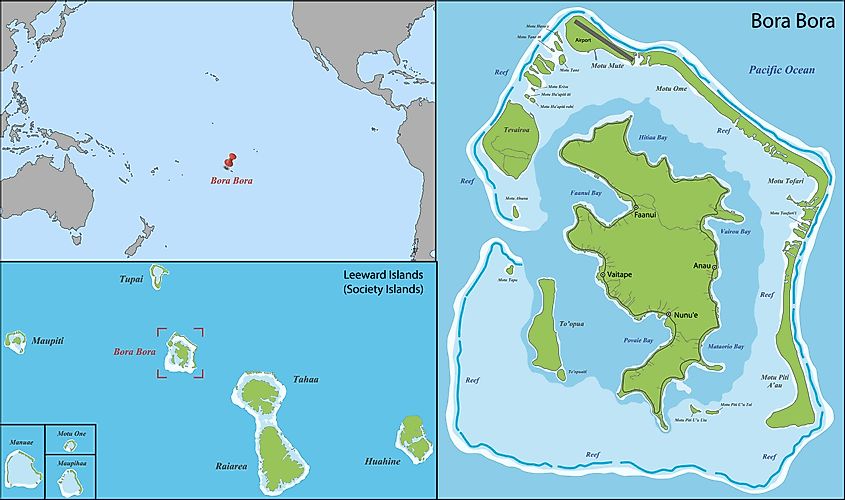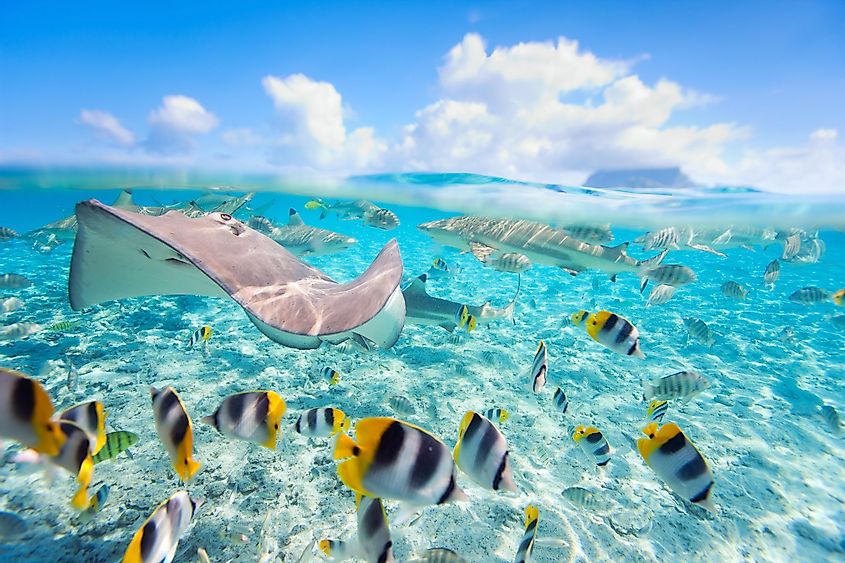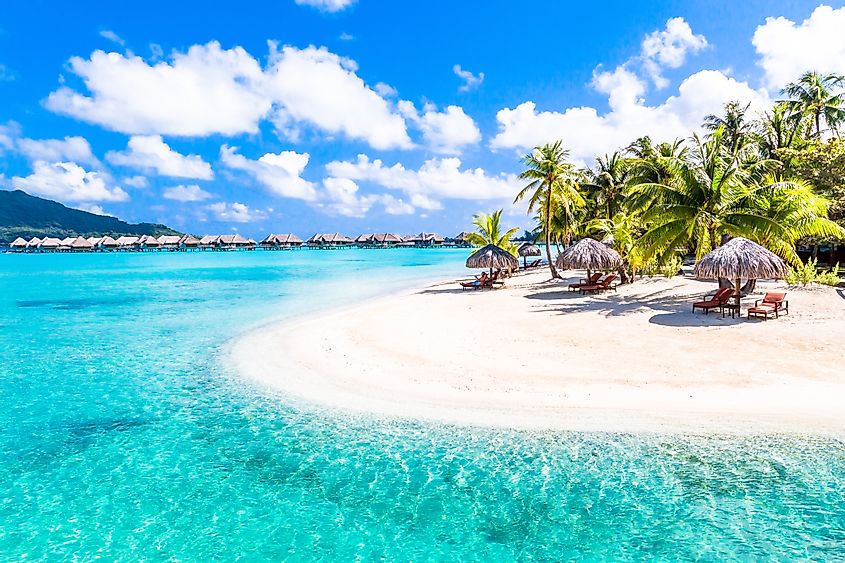
Bora Bora
French Polynesia is an Overseas Collectivity of France that comprises approximately 118 islands and atolls, scattered over a vast area in the south-central Pacific Ocean. French Polynesia includes the island groups of Austral, Society, Tuamotu, Gambier, and Marquesas.
Covering a total land area of about 30.55 km2, Bora Bora is a volcanic island group in the Leeward Islands which form the western portion of French Polynesia’s Society Islands group (not to be confused with the Caribbean Leeward Islands). The main Bora Bora island is geographically positioned about 265 km northwest of Tahiti and 4,066 km south of Hawaii.
Geography

The principal mountainous island of Bora Bora covers an area of about 19.91 km2, and it forms the Bora Bora group of islands along with the adjacent smaller islands of Motu Ahuna, Motu Tapu, Motu Mute, Motu Tevairoa, Motu Tane, Motu Toopua, Motu Tehotu, Motu Sofitel, Motu Pitiaau, Motu Tufari, and Motu Toopuaiti.
The rugged main island is surrounded by a large lagoon and coral reefs. The island has a length of about 10 km and a maximum width of 4 km. The central part of the island contains remnants of an extinct volcano and features two green volcanic mountain peaks, Mount Otemanu and Mount Pahia. Mount Otemanu, which rises to an elevation of 727 m, is the highest point on Bora Bora. The chief village of Vaitape, which serves as the island’s major administrative center, is located on the western coast of the main island.
The Bora Bora Islands experience a tropical monsoon climate with relatively stable temperatures throughout the year. The islands receive significant rainfall during the summer season that starts from November until April, while the dry season is from June to October.
Wildlife

The slopes of the island’s volcanic mountains are covered by virgin forests which consist of many endemic gastropod species (snails, slugs). Currently, a few gastropod species such as Euglandina and Lissachatina, along with a few flatworms, have been introduced on Bora Bora. These exotic species have led to the complete removal of the native Partula lutea species from the island.
Coconut palms, breadfruit trees, and pandanus trees cover the landscape of Bora Bora. The island’s coral reefs provide support for several marine species like fish, manta rays, and sharks.
Brief History And Economy

It is believed that Bora Bora was initially inhabited by the Polynesians in the 4th century CE. The island was then colloquially known as Pora Pora which means “First Born.” In 1722, the Bora Bora island was first sighted by the Dutch explorer Jakob Roggeveen. The British explorer James Cook first visited the Tahaa and Raiatea islands in 1769 and the main Bora Bora island in 1777. From 1820 onwards, the London Missionary Society started introducing Christianity to the inhabitants of the island. In the late 19th century, the Kingdom of Bora Bora was annexed by France.
During World War II, Bora Bora played a strategic role as the United States established an Allied naval and airbase on the island. The island did not see any combat during the entire course of the war and the US military base was formally closed in 1946. After WWII, Bora Bora along with all the other French islands became a part of the French Overseas Territories.
Bora Bora serves as a popular tourist destination and attracts thousands of tourists every year. The island offers a variety of recreational activities for its visitors including deep-sea fishing, snorkeling, scuba diving, and hiking. Commercial products like copra, vanilla, sugar, rum, and Tahitian pearls are exported from Bora Bora.











